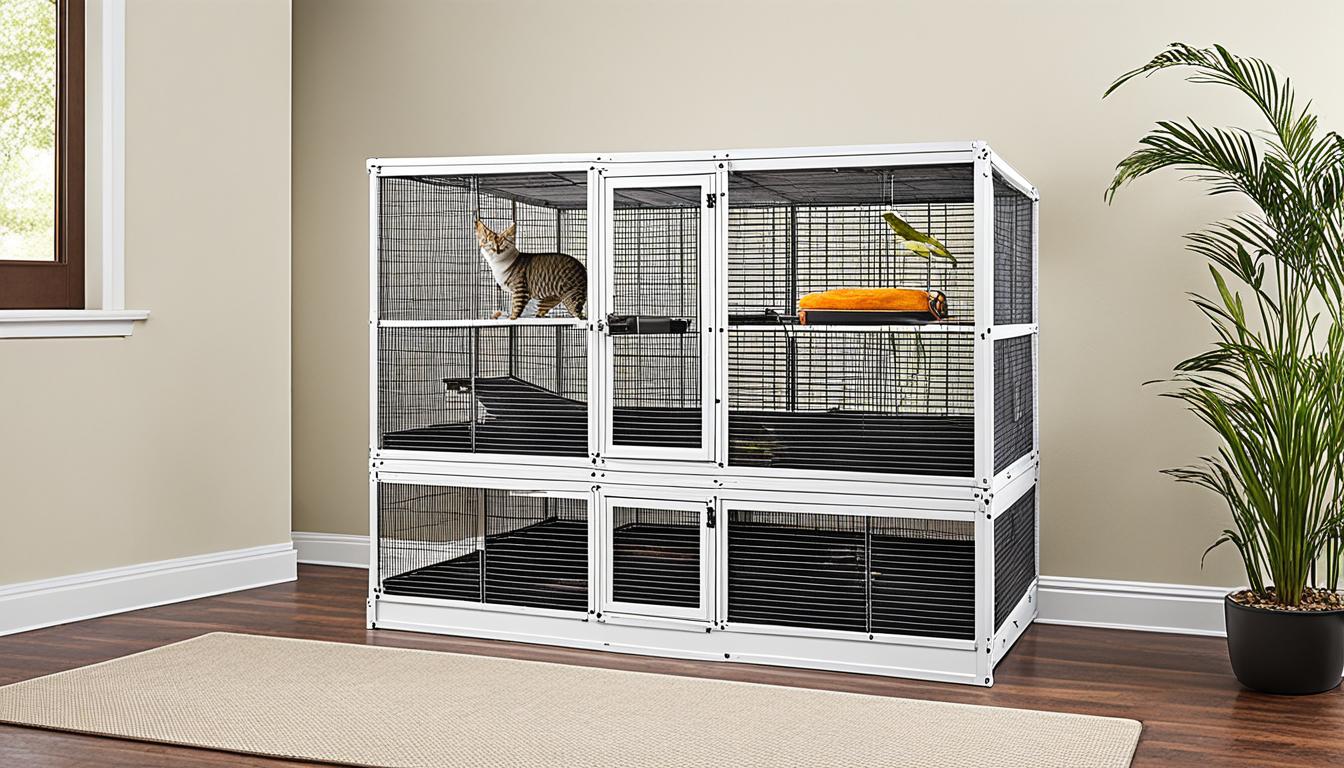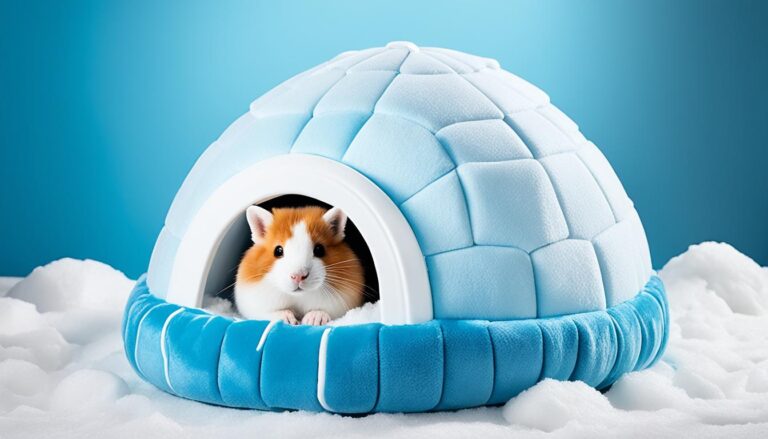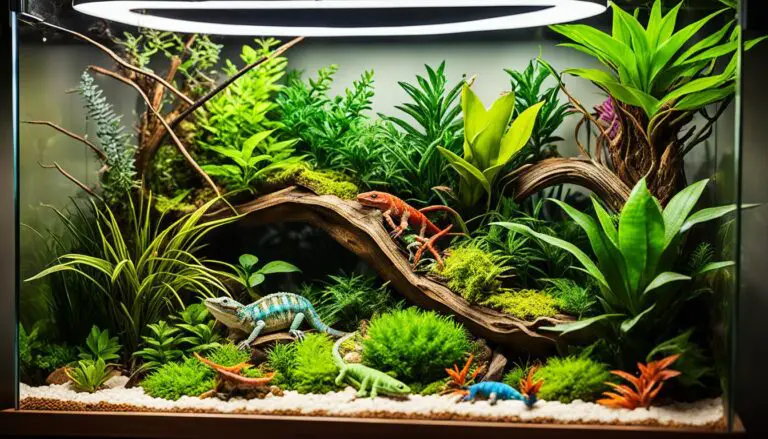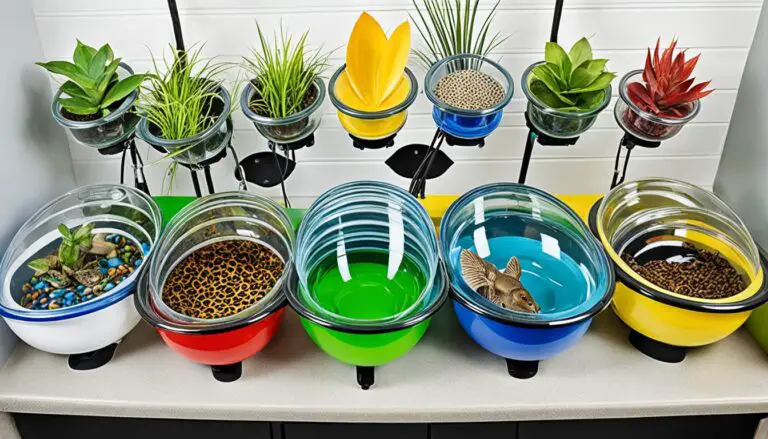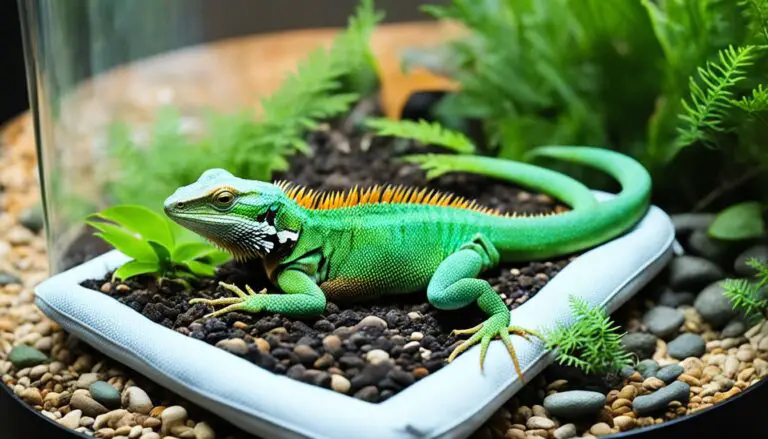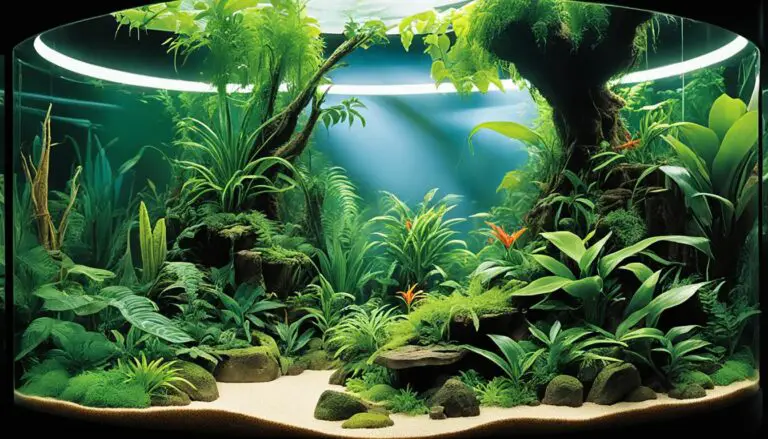Exotic Pet Housing Materials: Safe & Durable Choices
When it comes to housing your exotic pet, choosing the right materials for their enclosure is crucial. This article explores the top safe and durable housing materials for exotic pets, including reptiles, amphibians, and unique pets. We gathered insightful information from various sources to provide you with a comprehensive guide on the best housing materials available for your beloved pets.
Key Takeaways:
- Choosing the right housing material is essential for the well-being of your exotic pet.
- Acrylic, glass, PVC paneling, and HDPE plastic are popular choices for reptile enclosures.
- Consider the needs and preferences of your exotic pet when selecting a housing material.
- Acrylic enclosures offer excellent heat retention and visibility but can be expensive and scratch easily.
- Glass enclosures provide a great view and are easy to clean but can be heavy and breakable.
Best Material for Reptile Enclosures
When it comes to housing reptiles, choosing the right materials for their enclosures is essential. Reptiles have specific needs when it comes to heat retention and insulation, so selecting the best material is crucial for their well-being. There are several popular options available, each with its own pros and cons.
1. Acrylic Reptile Enclosures
Acrylic enclosures are a popular choice among reptile owners due to their excellent heat retention properties and high visibility. These enclosures are lightweight and easy to clean, making maintenance a breeze. However, keep in mind that they can be expensive to manufacture and may scratch easily, affecting their visibility and aesthetics. It’s also important to note that some reptiles may feel stressed in transparent cages and prefer covered walls for added security.
2. Glass Reptile Enclosures
Glass enclosures offer a great view of your reptiles’ habitat and are easy to clean. They provide a water-tight structure and can support specific temperature requirements. However, glass cages can be heavy and breakable, making them less suitable for stacking or modifications. Some reptiles may also feel stressed in transparent cages, so it’s important to consider their comfort and behavioral needs.
3. PVC Paneling for Reptile Enclosures
PVC paneling is another popular choice for reptile enclosures. These panels are lightweight and offer excellent heat and humidity insulation, creating a comfortable environment for reptiles. PVC enclosures are easily modifiable, allowing for customization and the addition of extra hiding spots. However, it’s important to choose high-quality PVC panels to avoid any toxic compounds. Some PVC enclosures may not withstand extreme environments and require proper assembly for watertightness.
4. HDPE Plastic for Reptile Enclosures
HDPE (high-density polyethylene) plastic is often considered the best material for reptile enclosures. It is durable, lightweight, and resistant to warping, discoloration, and deterioration. HDPE enclosures are highly odor and chemical-resistant, making them safe for reptiles. Although they may be more expensive upfront, HDPE enclosures offer long-term reliability and are the safest choice for reptiles.
When selecting the best material for your reptile’s enclosure, it’s important to consider factors such as heat retention, durability, visibility, and the specific needs of your reptile. Keeping their comfort and safety in mind will help provide them with a suitable and secure habitat.

| Material | Advantages | Disadvantages |
|---|---|---|
| Acrylic | Excellent heat retention, easy to clean, lightweight | Expensive, scratches easily, transparency may cause stress for some reptiles |
| Glass | Great visibility, easy to clean, water-tight structure | Heavy, breakable, transparency may cause stress for some reptiles |
| PVC paneling | Lightweight, excellent insulation, easy to customize | Quality variation, may not withstand extreme environments |
| HDPE plastic | Durable, lightweight, resistant to warping and deterioration | Higher upfront cost |
Pros and Cons of Acrylic Reptile Enclosures
Acrylic enclosures are a popular choice among reptile enthusiasts due to their numerous advantages. Let’s explore the pros and cons of using acrylic reptile enclosures to help you make an informed decision for your scaly friends.
Advantages of Acrylic Reptile Enclosures
- Excellent Heat Retention: Acrylic enclosures are known for their exceptional heat retention properties, providing a cozy and comfortable environment for reptiles that require specific temperature ranges.
- Easy Cleaning: With their smooth surface, acrylic enclosures are a breeze to clean. You can easily wipe away any dust or residue, ensuring a hygienic habitat for your reptile.
- Lightweight Nature: Acrylic enclosures are lighter compared to glass enclosures, making them easier to move and transport. This convenience is particularly useful during enclosure maintenance or when rearranging your reptile’s habitat.
Disadvantages of Acrylic Reptile Enclosures
- Expensive Manufacturing: Acrylic enclosures can be relatively expensive to manufacture compared to other enclosure materials. However, their durability and longevity make them a worthwhile investment in the long run.
- Susceptible to Scratches: While acrylic is highly durable, it is prone to scratching. Caution must be exercised when handling and maintaining the enclosure to prevent unsightly blemishes that may affect visibility.
- Reptile Stress: Despite the advantages of transparent enclosures, some reptiles may feel stressed or exposed in transparent cages. Many reptiles thrive in enclosures with covered walls, providing them with a sense of security and privacy.
“Acrylic enclosures provide excellent heat retention and easy cleaning, but they can be expensive to manufacture and may scratch easily. Additionally, some reptiles may prefer covered walls for added security.”
As with any enclosure material, it’s essential to consider the specific needs and preferences of your reptile when selecting the right housing option. While acrylic enclosures offer several benefits, it’s crucial to weigh them against the disadvantages and ensure it aligns with the requirements of your scaly companion.
Advantages and Disadvantages of Glass Reptile Enclosures
Glass enclosures provide several benefits for housing reptiles. Their transparent nature offers a clear view of your pet’s habitat, allowing you to observe their behavior and enjoy their presence. The sleek aesthetics of glass enclosures also add a touch of elegance to any room. Cleaning glass enclosures is a breeze, as they can be wiped down easily, maintaining a visually appealing environment for your reptile.
One of the significant advantages of glass enclosures is their ability to create a water-tight structure. This feature ensures that the enclosure retains moisture, making it suitable for reptiles that require high humidity levels. Glass enclosures are also excellent at maintaining specific temperature requirements, providing a stable and comfortable environment for reptiles that require precise heat regulation.
However, it’s important to consider the disadvantages of glass enclosures as well. Glass cages tend to be heavy and breakable, requiring extra caution during transport or repositioning. Additionally, glass enclosures may not be suitable for stacking multiple levels, limiting space optimization for those with multiple reptiles. Some reptiles, especially those who prefer privacy, might also feel stressed in transparent cages, as the lack of hiding spots can make them feel exposed.
Advantages:
- Clear view of the reptile’s habitat
- Sleek and elegant aesthetics
- Easy to clean
- Water-tight structure for maintaining humidity
- Precise temperature control
Disadvantages:
- Heavy and breakable
- Not suitable for stacking
- Can cause stress in some reptiles
When deciding on the ideal enclosure for your reptile, it’s crucial to weigh the advantages and disadvantages of different materials. Glass enclosures offer great visibility and temperature control but may not be the best choice for all reptiles. Consider your pet’s species, habitat preferences, and your own specific needs as you make an informed decision about the most suitable housing material.

A stunning glass reptile enclosure providing a clear view of the pet’s habitat.
PVC Panels for Reptile Enclosures – Pros and Cons
When it comes to housing reptiles, PVC panels are a popular choice due to their unique advantages. Let’s explore the pros and cons of using PVC panel enclosures for your reptile pets.
Advantages of PVC Panel Enclosures
- Lightweight: PVC panels are lightweight, making them easy to handle and assemble.
- Excellent Insulation: PVC panels provide exceptional heat and humidity insulation, creating a suitable environment for reptiles.
- Modifiability: PVC panels can be easily modified to fit your specific needs, allowing for customization and flexibility in enclosure design.
- Extra Cover: The solid walls of PVC enclosures offer added security and privacy for reptiles, reducing their stress levels.
Disadvantages of PVC Panel Enclosures
- Quality Concerns: It’s crucial to choose high-quality PVC panels to avoid toxic compounds that may harm your reptiles. Ensure you purchase from reputable manufacturers.
- Environmental Considerations: While PVC panels perform well in controlled environments, extreme conditions may cause them to degrade or lose structural integrity.
- Assembly Requirements: Proper assembly is necessary to ensure watertightness in PVC enclosures, preventing leaks or moisture buildup.
Before selecting PVC panel enclosures for your reptiles, carefully evaluate these pros and cons to make an informed decision regarding their housing needs.
HDPE Reptile Enclosures – The Best Option
When it comes to providing the best housing for your reptile, HDPE (high-density polyethylene) enclosures stand out as the top choice. Not only are they durable and lightweight, but they also offer numerous advantages over other materials.
One of the key advantages of HDPE reptile enclosures is their resistance to warping, discoloration, and deterioration. This means that your enclosure will maintain its structural integrity and aesthetics for a long time, ensuring a safe and secure habitat for your reptile.
Another standout feature of HDPE enclosures is their odor and chemical resistance. Reptiles can be sensitive to certain odors and chemicals, which can adversely affect their health. HDPE’s resistance to these substances guarantees a safer environment for your pet.
Although HDPE enclosures may be more expensive upfront, they offer long-term reliability, making them a cost-effective choice in the long run. With their durability and resistance to wear and tear, you won’t have to worry about frequent replacements or repairs.
FAQ
What are the best housing materials for exotic pets?
Why are acrylic enclosures popular for reptiles?
What are the advantages of glass enclosures for reptiles?
What are the benefits and drawbacks of PVC panels for reptile enclosures?
Why are HDPE reptile enclosures considered the best option?
Source Links
- https://www.visionproducts.us/blog/reptile-enclosure-materials/
- https://customreptilehabitats.com/blogs/news/all-about-reptile-cages
- https://www.floortrendsmag.com/articles/110631-carpet-one-names-the-best-flooring-for-exotic-pets
Peter Stones is the founder of Exotic Pets Place, the leading online resource for exotic pet care information.
With over 10 years of hands-on exotic pet ownership experience, he is deeply passionate about sharing his expertise to help others properly care for their unusual pets.
When he's not writing extensively researched articles or connecting with fellow exotic pet enthusiasts worldwide, you can find Peter at home tending to his own beloved menagerie of exotic animals.

